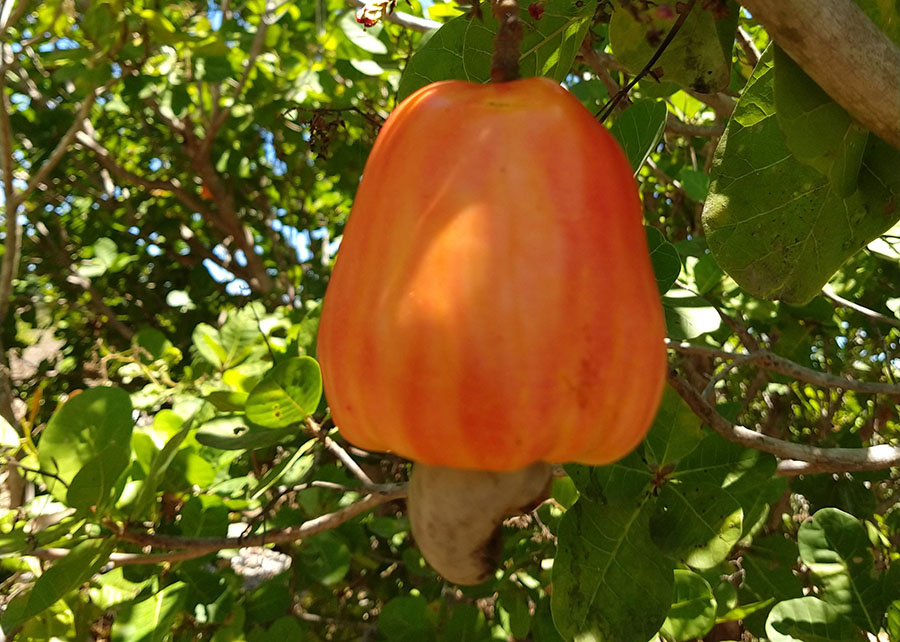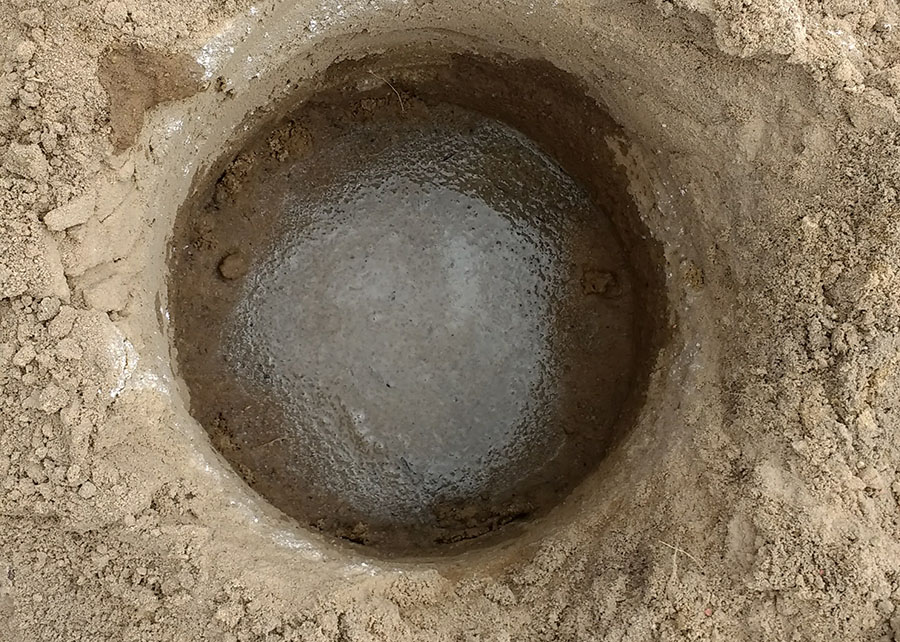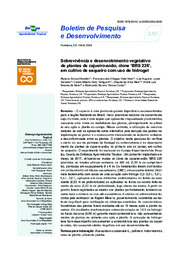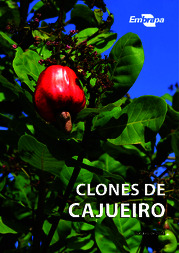Hydrogel increases survival of cashew seedlings
Hydrogel increases survival of cashew seedlings
Photo: Luiz Augusto Serrano

Hydrogel is an alternative to reduce cashew seedling mortality in the dry season
|
A water-retaining polymer boosted the survival and development of cashew seedlings in studies by Embrapa Tropical Agroindustry. The soil conditioner called hydrogel reduced the number of plant deaths during the first year in the orchard.
“The hydrogel is widely used in southeaster, midwestern and southern Bahia in eucalyptus plantations, which is a perennial tree. Thus, in light of the mortality of cashew seedlings that are newly planted in the field during the dry season between June and December, Embrapa's research team decided to test the product in the crop”, reports Luiz Augusto Serrano, a researcher at Embrapa Tropical Agroindustry.
Researchers tested the water-retaining polymer to assess the survival of the dwarf cashew tree cultivar 'BRS 226', which was developed by Embrapa. The experiment was performed at the Experimental Field of Pacajus, a town in the countryside of Ceará state. The region is located in a transition zone between the coast and the semi-arid region, with an average altitude of 79 meters and an average annual temperature of around 26°C.
The cashew tree originated in the coast of northern and northeastern Brazil. Despite being adapted to the hot climate and water stress, cashew cropping has been facing problems as cultivation has been moving away from the coastal strip and into the semi-arid hinterlands. The main obstacle is the reduced annual rainfall in zones that are farther from the coast.
In the course of the years, it was observed that planting seedlings late (starting from the end of April) showed significant losses, even though it is within the period recommended in the Agricultural Climate Risk Zoning (ACRZ) for cashew cultivation. Cashew tree mortality can surpass the limit of 25%, causing financial losses for cashew growers.
The study recorded that applying hydrogel contributes to increasing the survival rate of cashew seedlings in rainfed conditions. Among the different configurations tested, one of them showed significantly higher survival than the control plot (which did not receive any treatment), as no plant death occurred during the experiment's monitoring period. The most successful configuration corresponds to the application of one liter of hydrated hydrogel at the bottom of the half-meter-deep hole. The survey data was recently published in this bulletin.
“With the positive research results, it will now be possible to officially recommend the product to cashew growers, a fact that will minimize the mortality of seedlings in regions with little rainfall”, Luiz Serrano adds.
Photo: Luiz Serrano
|
| TREATMENT | DESCRIPTION |
| Treatment 1 (control) | no hydrogel |
| Treatment 2 | 0.5 L of hydrogel (0.5 m) |
| Treatment 3 | 1.0 L of hydrogel (0.5 m) |
| Treatment 4 | 1.5 L of hydrogel (0.5 m) |
| Treatment 5 | 2.0 L of hydrogel (0.5 m) |
| Treatment 6 | 0.5 L of hydrogel (0.2 m) |
| Treatment 7 | 1.0 L of hydrogel (0.2 m) |
| Treatment 8 | 1.5 L of hydrogel (0.2 m) |
| Treatment 9 | 2.0 L of hydrogel (0.2 m) |
To prepare the solution, they used a commercial hydrogel formula (acrylamide copolymer and potassium acrylate of medium particle size) following the manufacturer's instructions of 2.5 g per liter of water.
Six seedlings were planted per plot, which were organized into four blocks, totaling 216 plants to be assessed. Then fertilizers that are sources of phosphorus, micronutrients and potassium were added to the soil in the holes.
In the course of the experiment, the crop treatments followed the technical recommendations established for the cultivation of dwarf cashew trees, according to the Embrapa's Cashew Production System.
The results showed that the application of 1 liter of the hydrated hydrogel solution at the bottom of the hole positively contributed to the survival rate of BRS 226 dwarf cashew tree seedlings in rainfed conditions.
According to the researcher Luiz Serrano, the product is affordable and the decrease in seedling mortality is worth the investment. Thus, the use of hydrogel will allow farmers to reduce the number of water application operations during the dry season.
“In addition to this study that showed the application of the water-diluted hydrogel solution, another will be published soon on the application of pure hydrogel powder equally at the bottom of the hole in the ground”, Serrano concludes.
Photo: Luiz Serrano
Ricardo Moura (MTb 1.681/CE)
Embrapa Tropical Agroindustry
Collaboration: Lindemberg Bernardo, journalism intern
Embrapa Tropical Agroindustry
Press inquiries
agroindustria-tropical.imprensa@embrapa.br
Translation: Mariana Medeiros (13044/DF)
Embrapa's Superintendency of Communications
Further information on the topic
Citizen Attention Service (SAC)
www.embrapa.br/contact-us/sac/




